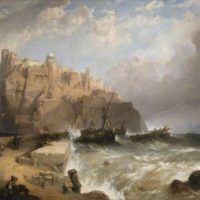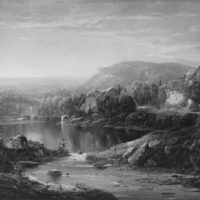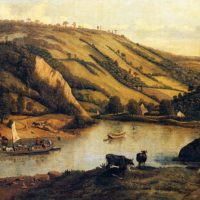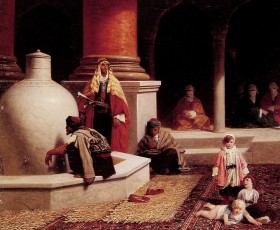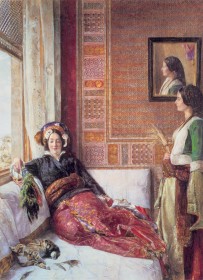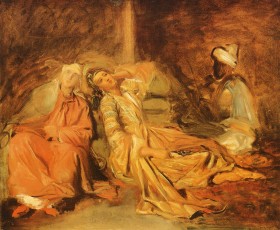Ottoman Archive
Portrayed woman was a concubine in the harem of one of the kings of the Ottoman dynasty and most probably the king lived between 1860 to 1926 as that’s the lifespan of the French artist, Charles Amable Lenoir, who has depicted this painting. The Ottoman kingdom lasted until 1922, so it is most probable that the woman in the portrait is an actual concubine from the Ottoman harem. The word, Odalisque, originate from Turkish and meant a chambermaid. An Odalisque didn’t necessarily served the king but served the concubines of the king. But, if she has some sort of skill or beauty enough to represent her to the king or make her one of his concubines she could have a ‘promotion’. She could even be […]
Being an orientalist painter, Filippo Baratti produced paintings mostly based on the East Asian cultures. He, himself was a Hungarian painter, who took great interest in eastern cultures and had a knack to depict them with cultural respects. Middle Asian Islamic Culture The current painting represents a middle Asian or northern South African culture where harems (separate buildings for wives and concubines in Muslim culture, restricted for unauthorized people to enter) were the part of the royal and aristocratic society. The painting is more than 100 years old. The exact date isn’t specified. But, we can assume that at the time of the depiction, the Harem practice was very province and normal as even today, in some Muslim countries the custom of harem is in […]
If you are aware of the political games played across portals of power, you may not find too hard to believe that the Bolsheviks were encouraged to make their aggression against Eurasian monarchies by many western minds to gain some sort of control over the region. One of the heroes resisting the rebellious movement was Mahmud Sevket Pasha of Turkey. It raged fiercely in the political arena by the end of 1909, as the rebels were demanding an overthrow of the constitutional monarchy in the Ottoman region. By the time it had gained enough fanning to get violent and conspiratorial, the Pasha was able to subdue the forces adequately, to the effect that it brought an end to the movement and the probable mayhem. However, […]




